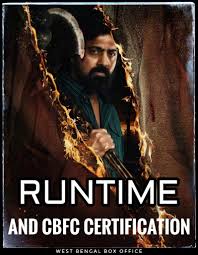Indian indie noir: A space with a twist in the tale Film noir is style, psychological poverty, deportment of a city, attitude, the faces, the clothes, the animus they reveal. Key to this innovation is the deliberate and strategic use of music and silence to express complex emotions and tell complicated stories. This article explores how movies such as Tumbbad, Talvar, and The Disciple rely on sound design to weave captivating movie experiences.
The Evolution of Sound in Indian Noir Cinema
Traditionally, Indian cinema has been synonymous with elaborate song and dance sequences. However, indie noir films have shifted this paradigm by employing music and silence as narrative tools rather than mere entertainment. This evolution reflects a deeper understanding of sound’s potential to influence audience perception and emotion.(filmsound.org)
Case Studies: Masterful Use of Sound and Silence
Tumbbad (2018): Crafting Atmosphere Through Sound
Tumbbad stands out for its haunting soundscape, which plays a pivotal role in building its eerie atmosphere. Composer Jesper Kyd blended Indian and Western musical elements to create a score that complements the film’s dark visuals. The use of ambient sounds, like the creaking of doors and whispers of the wind, further immerses the audience into the film’s world. (Wikipedia)
Talvar (2015): Silence as a Narrative Device
In Talvar, sound designer Shajith Koyeri utilized silence to emphasize the film’s tense moments. By minimizing background noise during critical scenes, the film draws attention to the characters’ emotions and the gravity of the situation. This approach underscores the narrative’s seriousness and invites viewers to engage more deeply with the story. (digitalstudioindia.com)
The Disciple (2020): Exploring Inner Turmoil Through Sound
The Disciple offers an introspective look into the life of a classical musician. Director Chaitanya Tamhane’s meticulous sound design captures the protagonist’s internal struggles and dedication to his craft. The film’s use of ambient sounds and selective silence mirrors the character’s emotional journey, providing a profound auditory experience. (Wikipedia)
The Cultural Context of Sound in Indian Cinema
Indian cinema’s relationship with sound is deeply rooted in its cultural context. The strategic use of music and silence in indie noir films reflects a departure from traditional norms, embracing a more nuanced approach to storytelling. This shift allows filmmakers to explore complex themes and emotions, resonating with contemporary audiences seeking depth and authenticity.(filmsound.org)
The Future of Sound in Indian Indie Noir Films
Sound design is also playing an important part in the development of Indian indie noir. New generation filmmakers are trying out unique sound environment, in order to add more depth to their storytelling and emotional richness. The trend bodes well for a future where the ear and the absence of ear is woven into cinematic narratives (in new, interesting ways) that rock the foundation of Hollywood storytelling.
The application of music and silence for creative effect in the Indian indie noir films featuring Tumbbad, Talvar, The Disciple, demonstrate how the genre has romanticized everything about tales that have dark undertones. Utilizing sound design, these films all make for immersive experiences that connect with audiences on a more profound emotional level. As the genre exponentially expands, the focus of sound as a narrative device will only increase, influencing the future of Indian cinema.(Wikipedia)
Frequently Asked Questions (FAQ)
Q1: What defines Indian indie noir cinema?
Indian indie noir cinema is characterized by its exploration of dark themes, complex characters, and stylistic elements like chiaroscuro lighting and non-linear narratives.
Q2: How does sound design enhance storytelling in these films?
Sound design in Indian indie noir films adds depth to the narrative by using music and silence to convey emotions, build tension, and immerse the audience in the film’s atmosphere.
Q3: Why is silence used strategically in films like Talvar?
Silence in films like Talvar serves to highlight critical moments, allowing the audience to focus on the characters’ emotions and the gravity of the situation without distractions.
Q4: How does The Disciple utilize sound to reflect the protagonist’s journey?
The Disciple uses ambient sounds and selective silence to mirror the protagonist’s internal struggles and dedication to his musical craft, providing an introspective auditory experience.(Wikipedia)
Q5: What is the future of sound design in Indian indie noir cinema?
The future of sound design in Indian indie noir cinema looks promising, with filmmakers increasingly recognizing the power of sound and silence to enhance storytelling and emotional engagement.